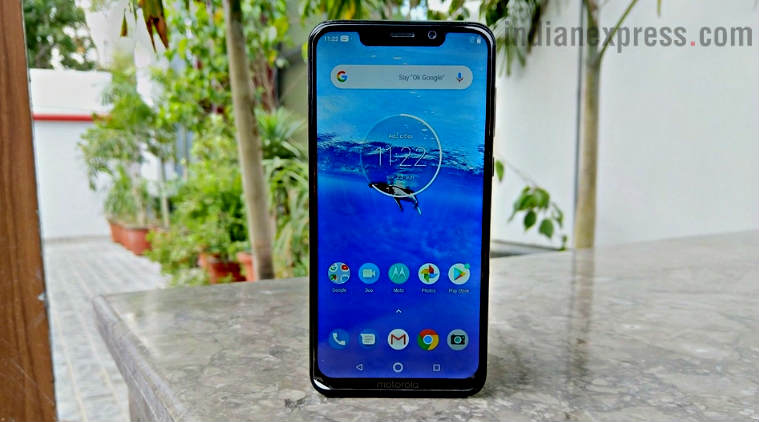what is flexible display
What is flexible display ??

A prototype flexible electronic paper display
Flexible electronic paper (e-paper) based displays were the
first flexible displays conceptualized and prototype. Though this form of
flexible displays has a long history and were attempted by many companies, it
is only recently that this technology began to see commercial implementations
slated for mass production to be used in consumer electronic devices.
Xerox PARC
The concept of developing a flexible display was first put
forth by Xerox PARC (Palo Alto Research Company). In 1974, Nicholas K.
Sheridon, a PARC employee, made a major breakthrough in flexible display
technology and produced the first flexible e-paper display. Dubbed Gyricon,
this new display technology was designed to mimic the properties of paper, but
married with the capacity to display dynamic digital images. Sheridon
envisioned the advent of paperless offices and sought commercial applications
for Gyricon.[1] In 2003 Gyricon LLC was formed as a direct subsidiary of Xerox
to commercialize the electronic paper technology developed at Xerox PARC.[2]
Gyricon LLC's operations were short lived and in December 2005 Xerox closed the
subsidiary company in a move to focus on licensing the technology instead.[3]
HP and ASU
In 2005, Arizona State University opened a 250,000 square
foot facility dedicated to flexible display research named the ASU Flexible
Display Center (FDC). ASU received $43.7 million from the U.S. Army Research
Laboratory (ARL) towards the development of this research facility in February
2004.[4] A planned prototype device was slated for public demonstration later
that year.[5] However, the project met a series of delays. In December 2008,
ASU in partnership with Hewlett Packard demonstrated a prototype flexible
e-paper from the Flexible Display Center at the university.[6] HP continued on
with the research, and in 2010, showcased another demonstration.[7] However,
due to limitations in technology, HP stated "[our company] doesn't actually
see these panels being used in truly flexible or rollable displays, but instead
sees them being used to simply make displays thinner and lighter."[7]
Between 2004-2008, ASU developed its first small-scale
flexible displays.[8] Between 2008-2012, ARL committed to further sponsorship
of ASU’s Flexible Display Center, which included an additional $50 million in
research funding.[8] Although the U.S. Army funds ASU’s development of the
flexible display, the center’s focus is on commercial applications.[9]
Plastic Logic
This company develops and manufactures monochrome plastic
flexible displays in various sizes based on its proprietary organic thin film
transistor (OTFT) technology. They have also demonstrated their ability to
produce colour displays with this technology, however they are currently not
capable of manufacturing them on a large scale.[10][11][12] The displays are
manufactured in the company's purpose-built factory in Dresden, Germany, which
was the first factory of its kind to be built - dedicated to the high volume
manufacture of organic electronics.[13] These flexible displays are cited as
being "unbreakable", because they are made completely of plastic and
do not contain glass. They are also lighter and thinner than glass-based
displays and low-power. Applications of this flexible display technology
include signage,[14][15] wristwatches and wearable devices[16] as well as
automotive and mobile devices.[17]
Organic User Interfaces and the Human Media Lab
In 2004, a team led by Prof. Roel Vertegaal at Queen's
University's Human Media Lab in Canada developed PaperWindows,[18] the first
prototype bendable paper computer and first Organic User Interface. Since
full-colour, US Letter-sized displays were not available at the time,
PaperWindows deployed a form of active projection mapping of computer windows
on real paper documents that worked together as one computer through 3D
tracking. At a lecture to the Gyricon and Human-Computer Interaction teams at
Xerox PARC on May 4, 2007, Prof. Vertegaal publicly introduced the term Organic
User Interface (OUI) as a means of describing the implications of non-flat
display technologies on user interfaces of the future: paper computers,
flexible form factors for computing devices, but also encompassing rigid
display objects of any shape, with wrap-around, skin-like displays. The lecture
was published a year later as part of a special issue on Organic User Interfaces[19]
in the Communications of the ACM. In May 2010, the Human Media Lab partnered
with ASU's Flexible Display Center to produce PaperPhone,[20] the first
flexible smartphone with a flexible electrophoretic display. PaperPhone used
bend gestures for navigating contents. Since then, the Human Media Lab has
partnered with Plastic Logic and Intel to introduce the first flexible tablet
PC and multi-display e-paper computer, PaperTab,[21] at CES 2013, debuting the
world's first actuated flexible smartphone prototype, MorePhone[22] in April
2013.
what is flexible display
![what is flexible display]() Reviewed by Unknown
on
September 01, 2018
Rating:
Reviewed by Unknown
on
September 01, 2018
Rating:

Flexible displays are the future these days seven segment display are getting advanced and useful for many industries .
ReplyDelete